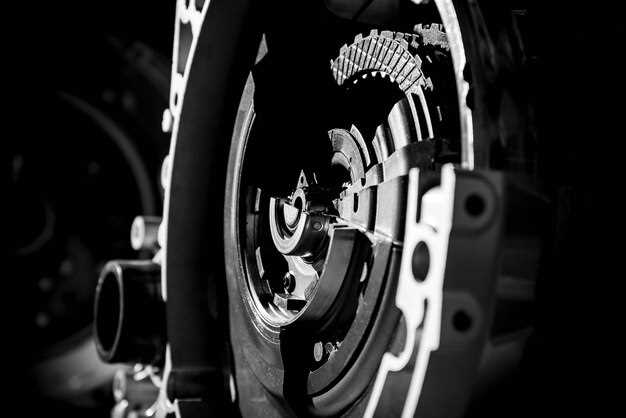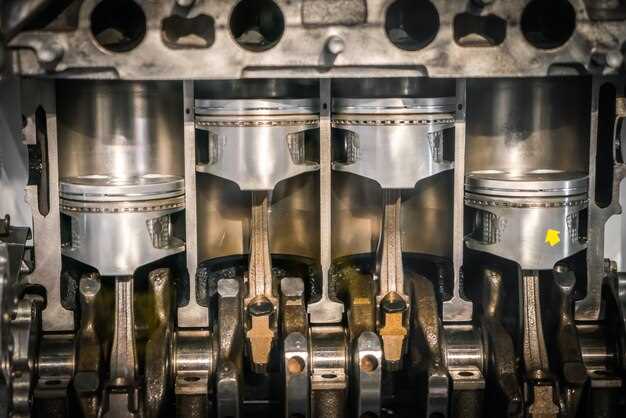

When it comes to optimizing the drivetrain of diesel trucks, one of the most crucial components to consider is the clutch system. A high-performance clutch is not merely an accessory; it’s an essential upgrade that can dramatically enhance power transmission and overall vehicle efficiency. In a world where durability and reliability are paramount, selecting the right clutch solution can significantly impact the performance of heavy-duty diesel engines.
Upgrading your diesel truck’s clutch not only improves its capacity to handle increased torque but also contributes to smoother gear transitions and reduced wear on vital drivetrain components. These solutions are designed to withstand the rigors of daily use in demanding environments, ensuring that your truck delivers consistent performance under load. By investing in high-quality clutch systems, drivers can experience improved acceleration, better towing capabilities, and enhanced overall functionality.
In this article, we will explore various high-performance clutch options available for diesel trucks, highlighting their features and benefits. We will also compare traditional systems with modern upgrades, offering insights on how to choose the right solution tailored to your specific needs and driving conditions. Whether you’re a professional driver or a fleet manager, understanding these clutch solutions is key to maximizing your diesel truck’s potential.
Choosing the Right Clutch for Heavy-Duty Applications

When it comes to optimizing the drivetrain of diesel trucks, selecting the right clutch is critical for enhancing performance and reliability. Heavy-duty applications demand clutches that not only withstand high torque loads but also provide smooth engagement and disengagement under tough conditions.
To make an informed decision, consider the following factors:
Torque Specifications: Measure the torque requirements of your specific diesel truck model. A clutch that can handle the power output of the engine will ensure optimal performance without slippage or premature wear.
Material Composition: Clutches made from high-quality materials such as ceramic or metallic compounds offer improved durability and heat resistance. These materials are especially advantageous in heavy-duty conditions where friction can generate excessive heat.
Upgrade Options: Evaluate whether an upgrade is necessary for your current clutch system. If your diesel truck frequently operates under heavy loads or in challenging terrains, investing in a high-performance clutch can provide better handling and reliability.
Driving Style: Consider how the vehicle will be used. For frequent stop-and-go situations, a clutch designed for smooth engagement is essential. On the other hand, for towing or hauling, focusing on a clutch that excels in torque transfer is crucial.
Compatibility: Ensure that the chosen clutch is compatible with the existing drivetrain components of your diesel truck. Mismatches can lead to performance issues and damage to other parts of the drivetrain.
By thoroughly assessing these factors, you can select the right clutch that meets the demands of heavy-duty applications, ensuring reliability and effectiveness in your diesel truck’s overall performance.
Benefits of Upgrading to Performance Clutch Systems

Upgrading to performance clutch systems can significantly enhance the driving experience for diesel truck owners. One of the most notable benefits is improved torque handling capabilities. Performance clutches are designed to withstand higher levels of torque, making them ideal for trucks that are frequently tasked with heavy towing or hauling. This upgrade ensures that the clutch can effectively manage the power generated by high-performance engines without slipping or wearing prematurely.
Another key advantage is increased responsiveness. A performance clutch system provides better engagement, allowing for smoother and more precise gear shifts. This responsiveness is essential for drivers who require quick acceleration or deceleration, especially in demanding driving conditions such as off-road terrains or while navigating tight turns.
Durability is also a significant benefit when investing in a performance clutch. Many aftermarket options are built with advanced materials and design features that extend the lifespan of the clutch. This helps minimize replacement frequency and associated costs, delivering better long-term value for truck owners.
Additionally, an upgraded performance clutch can lead to enhanced overall vehicle performance. By optimizing the transfer of power from the engine to the drivetrain, drivers can experience improved fuel efficiency and reduced engine strain. This not only boosts performance but can also contribute to lower operational costs over time.
Finally, the level of customization available with performance clutch systems allows for tailored solutions to meet individual needs. Whether a driver prioritizes towing capacity, off-road capability, or daily driving comfort, various options are available to suit specific applications. Upgrading to a performance clutch system can thus be a game-changer for those looking to maximize their diesel truck’s potential.
Installation Tips for Diesel Truck Clutch Upgrades
Upgrading the clutch in your diesel truck is a crucial step to enhance performance and reliability, especially when dealing with heavy loads or towing. Proper installation ensures that your drivetrain operates efficiently and can handle increased torque and power. Here are essential tips to consider during the installation process.
1. Gather Necessary Tools and Components
Before starting, collect all required tools, including a torque wrench, socket set, and clutch alignment tool. Ensure you have the new clutch kit, which typically includes the pressure plate, clutch disc, throw-out bearing, and pilot bearing. Having everything ready will streamline the installation process.
2. Review the Manual
Every diesel truck model may have specific installation guidelines. Reviewing the manufacturer’s service manual will provide vital information on torque specifications and the correct sequence for fastening components. Following these recommendations is critical for optimal performance.
3. Prepare the Drivetrain
Before removing the old clutch, ensure the drivetrain is secure. Disconnect the battery and drain the transmission fluid to avoid spills. Carefully remove the driveshaft and inspect any wear or damage, replacing parts if necessary.
4. Clean the Flywheel and Components
After removing the old clutch, clean the flywheel and other mating surfaces thoroughly. Remove any debris, rust, or oil, as contaminants can lead to premature wear or slippage. A clean surface promotes better engagement and overall efficiency.
5. Proper Alignment
Use a clutch alignment tool to position the clutch disc accurately on the flywheel. Misalignment can cause vibration and uneven wear, leading to potential drivetrain failure. Ensure the disc is centered before tightening the pressure plate.
6. Torque Specifications
Follow the specified torque values when securing the pressure plate to the flywheel. Using a torque wrench will help achieve uniform tightness, preventing issues like warping or uneven pressure distribution. Always tighten in a crisscross pattern for even pressure.
7. Check the Release Bearing
While upgrading the clutch, inspect the release bearing thoroughly. If it’s worn or damaged, replace it to ensure smooth engagement and disengagement of the clutch. A neglected release bearing can lead to operational issues down the line.
8. Reassemble with Care
When reattaching the driveshaft and other components, ensure that everything is secured correctly. Pay attention to U-joints and ensure they are properly lubricated. A well-assembled drivetrain is vital for optimal clutch performance.
9. Final Adjustments
After installation, check the clutch pedal free play and adjust if necessary. Proper engagement and disengagement of the clutch are essential for a responsive driving experience, especially in diesel trucks that often operate under high stress.
10. Test Drive
Finally, take the truck for a test drive to ensure everything is functioning correctly. Pay attention to clutch feel, gear engagement, and any unusual noises. A test drive will confirm that the installation was successful and that your upgraded clutch is performing as expected.
By following these tips, you can ensure a successful installation of your diesel truck’s clutch upgrade, thereby enhancing the overall performance and longevity of your drivetrain.






